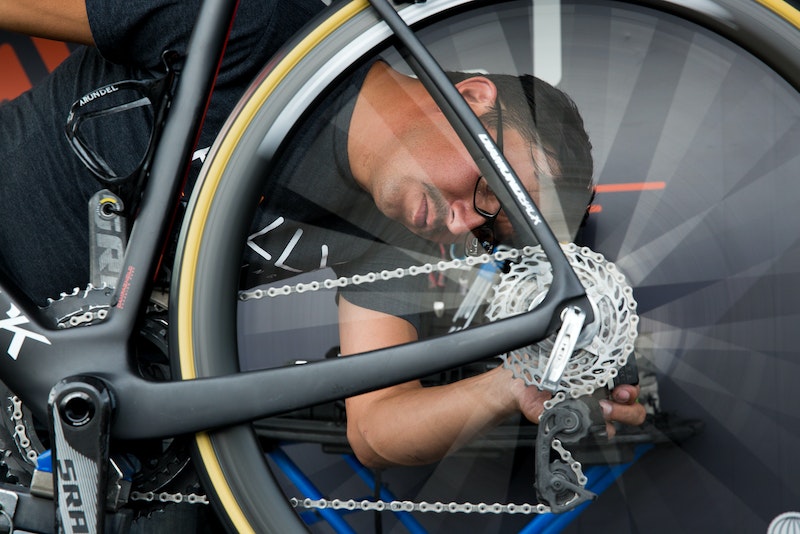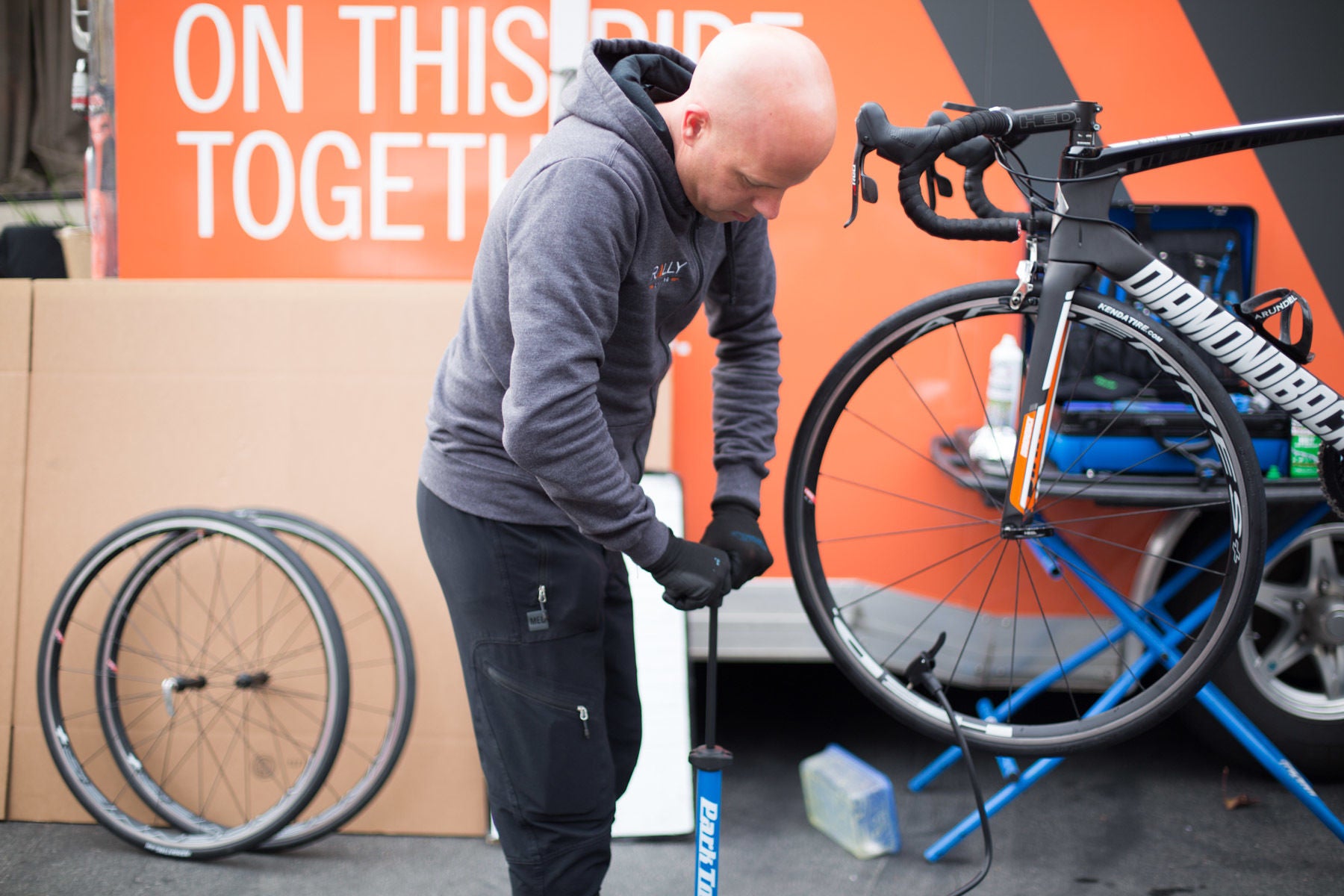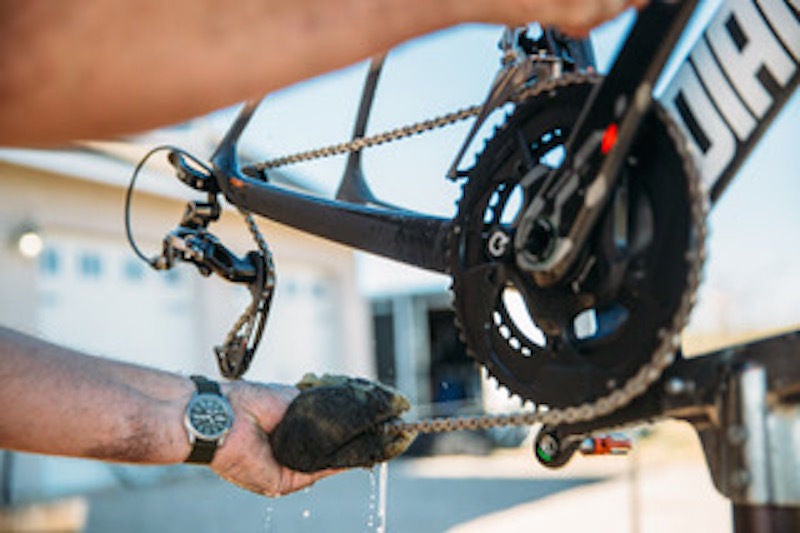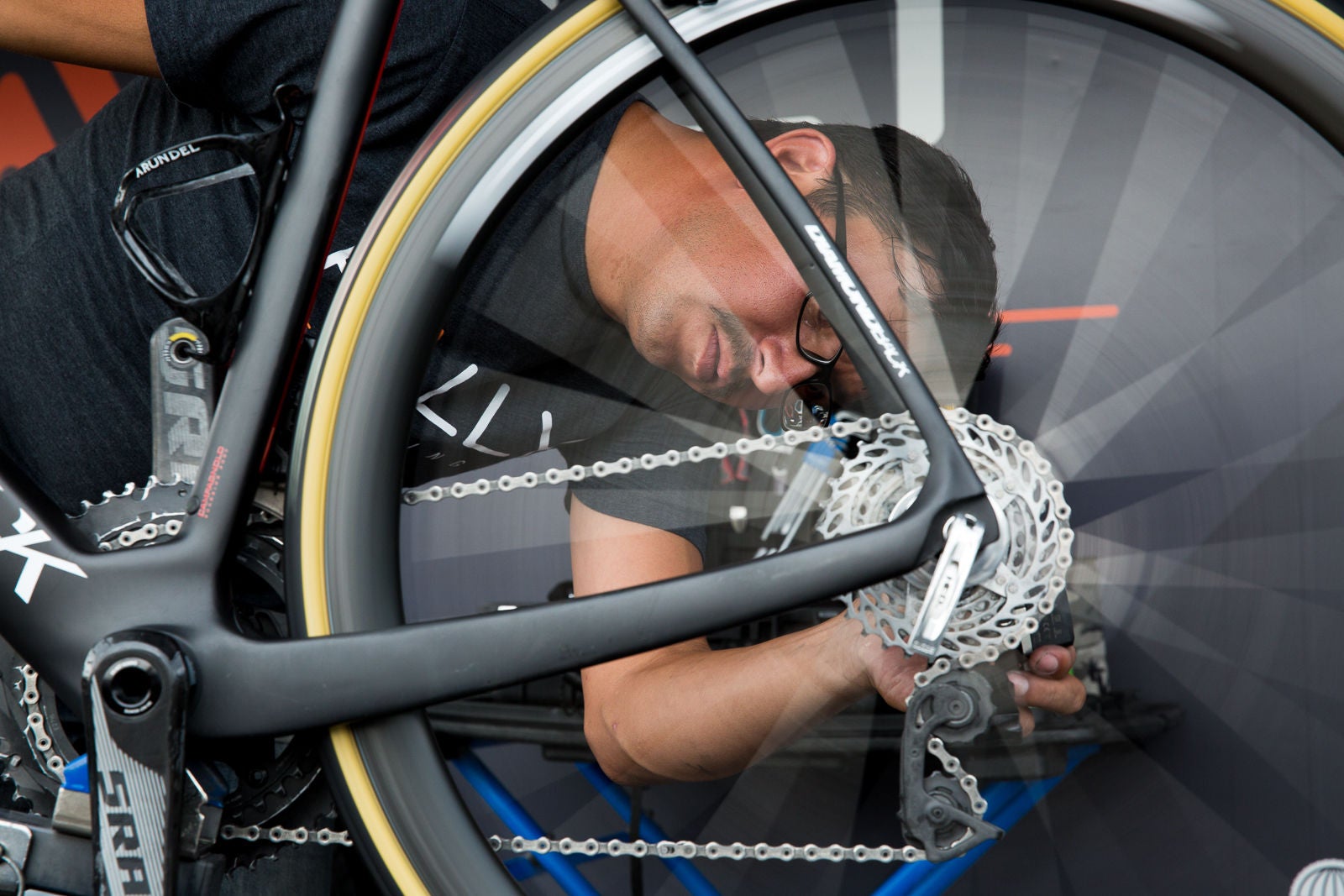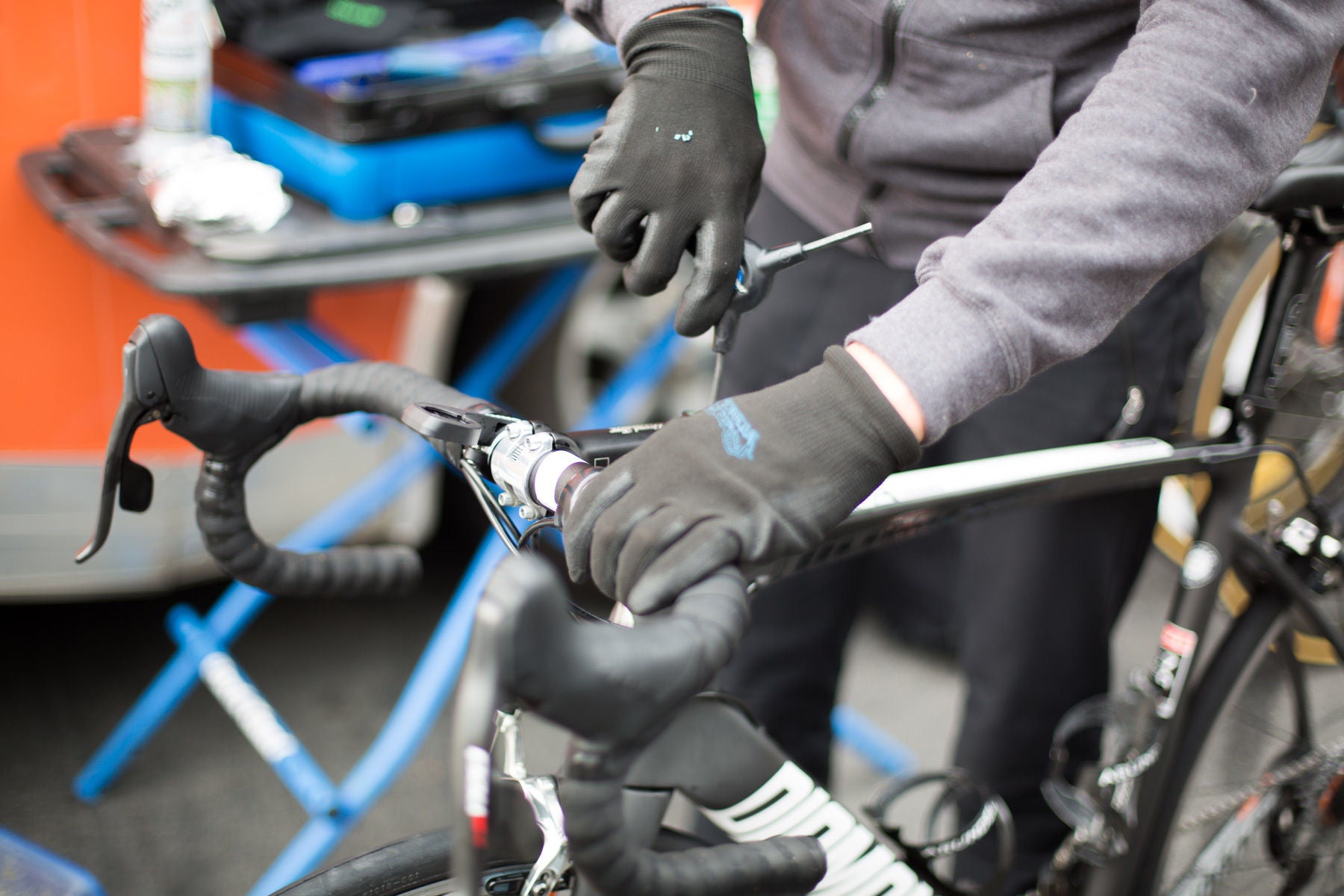You can save a lot of time and money by taking proper care of your bike — and it takes only a few minutes a day. Not only will bike parts last longer when you pay attention to them, but you’ll save money on major maintenance at the bike shop. For Rally Cyclingsm pro racers, taking care of their bikes is part of the job, and they know that clean, well-maintained bikes get better results in training and in racing.
Want to make your bike ride smoother and last longer? Follow these ultra-easy tips from the pros at Rally Cycling — riders and team mechanic Erik Maresjo.
1. Check Your Tires
“Check your tire pressure before every ride,” says Maresjo. While this might be obvious to veteran cyclists, new riders often miss this critical step. Road tires should be inflated to 85-100PSI, but might still look full at a mere 50PSI. The lower the pressure, the harder your ride will feel — and the more likely you are to end up with a flat. So before you head out the door, take 60 seconds to grab a pump and top off your tires.

